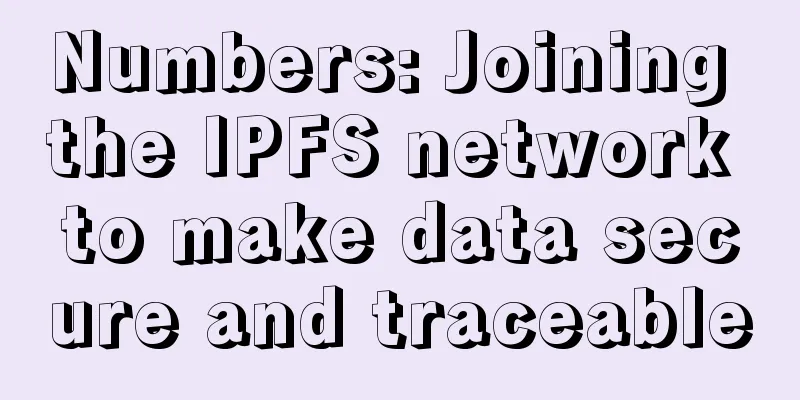Numbers: Joining the IPFS network to make data secure and traceable

|
Welcome to the second installment of the Filecoin Community Highlights series, where we profile users and developers who are building essential tools and services on the Filecoin network. We hope these stories inspire others to join our mission to build world-class tools for the distributed web. Numbers is a Taiwan-based company building technology to protect data integrity. The Numbers framework is an open, transparent, and traceable data system consisting of 3 layers: Applications, Data Control, and Infrastructure. At each layer, unique capabilities such as fingerprinting at the capture site, privacy-preserving computing, and data verification help ensure data remains trustworthy. Potential applications include evidence preservation, medical device collection, know-your-customer management, insurance confirmation, and other scenarios. Numbers co-founders Bofu Chen and Tammy Yang met on the technical team of an artificial intelligence (AI) and machine learning company. There they learned the value of user-generated data and began exploring ways to protect it. They launched the Numbers project to give people better access to and control over their information — including where and with whom it is shared. More recently, they have turned their attention to helping track coronavirus-related symptoms. This question will revolve around "Why choose to build on the Filecoin network, and the next development of Numbers." 1 How did you come up with Numbers? Tammy: Bofu and I met at an AI startup. We always had a question: given all the data used to train an AI model — who has access to that data? Is that data actually licensed by the person who owns it? Who should own that data? Sometimes, there’s no way to trace the origin of that data. Sometimes I joke that every AI model has a dark history - because every AI model relies on a lot of data. A user might consent to, say, a university collecting his or her data, but sometimes that data is misused by other groups for AI training. Our goal is to make data traceable. The integrity of the data is preserved and then it is possible to track the origin of that data. 2 What does Numbers do? How does it work? Bofu: Let me give you an example to explain how it works. Let's say a journalist sees something on the street and takes a photo with his phone. The Numbers app uses the sensors on that phone to collect metadata about location, time, and network, and generates a SHA256 hash to "fingerprint" that metadata. The sensor metadata is as follows: The hash will be used for verification later. We also considered using a unique content identifier (CID) as an alternative to the hash value. We upload all this information to IPFS, get a CID address in IPFS, and add it to the ledgers - Hyperledger (for enterprise solutions) and IOTA (for community solutions). Our ultimate goal is that when journalists publish digital content online, readers will be able to click on an icon in the bottom right corner of the image that will display all the data so you can confirm the source is trustworthy and traceable. When we put all of this information into a validated module, we achieve two things: first, we validate the data integrity, and second, we can trace it back to the source of the data. This is the basic capture and verification process. The released version of Numbers we are developing works on the HTC Exodus 1, a blockchain-enabled smartphone. We are also working with journalists on other versions that can be used on any phone. 3 Now you are also using IPFS and Filecoin, right? Tammy: We are using Textile tools on top of IPFS. The advantage of IPFS is that it provides a unique ID for each digital content. When people take photos or videos on their phones, these files are very large. It may be impractical to add data directly to the ledger because current ledger technology is not designed to record such a large amount of digital content. With IPFS, we only need to register the content ID to the ledger instead of the entire digital content file. Therefore, for us, the perfect match between the ledger and IPFS technology makes digital data traceable and trustworthy. Once we joined IPFS, we found that Filecoin is a very interesting technology because it adds an incentive layer to reward users, making them more willing to join the network and share their storage. This is very helpful because we are trying to find ways for users to create trusted and traceable digital content. This content can then be owned by the user and shared with anyone they trust or just want to share it with. 4 How are you applying Numbers technology in the fight against the global coronavirus pandemic? Tammy: Right now, it’s really important for people to have their own personal data logs that they can keep and track themselves. There are many ways that the government can track your status/health, but the current methods in place raise concerns that they give the government too much power. We are working with the MyData community to create an app called MyLog14 that allows people in quarantine to log simple symptoms like temperature, whether they have a cough, whether they have a runny nose - symptoms associated with COVID-19. This data is very personal and many of us don't want this information sent to government data servers - there are privacy issues. Also, governments don't necessarily have the infrastructure to receive the data and keep it secure. In the wake of the coronavirus, it’s really important that people have a log of their own personal data. Personal data is very personal indeed. You can keep it on your phone or store it on your laptop, but sometimes you want to be able to share it securely with other people, like healthcare workers. MyLog14 allows users to record their daily logs. This is similar to what a media photographer would do. You can automatically record environmental information for future review. And there is a dashboard that shows the logged symptoms and where you have been. This data is uploaded directly from the node instead of from the server. We plan to launch this at the end of April. over |
<<: Why do we need mining? Why do we need a mining pool?
>>: Grin V4.0 Hard Fork Plan: Mainnet Upgrade to be Conducted on July 15
Recommend
In-depth Analysis: Is the Ethereum Merger Overhyped?
Author: Jordi Alexander , CIO of Selini Capital ,...
What are the characteristics of a loyal man? How to treat a loyal man through facial features
In fact, women don’t want a lot. They don’t neces...
The facial features of a blessed woman tell us what kind of woman is blessed
Many women hope that they can bring good luck to ...
The position of moles and destiny-Don't give up on men with moles of this type
Every woman hopes that her husband is a gentle, k...
Four types of faces that are popular in the office
Whether a supervisor can get the support of his s...
Brazilian regulator to ban Bitcoin mining investments
Baozou Commentary : The Brazilian government has ...
Bitcoin ETF regains hope as SEC approves reconsideration petition
The Winklevoss twins' application for listing...
Digital currency, how far is the dream from becoming reality?
Author: Jinrong Guide Bitcoin is hot In the past ...
Is it good to have a crooked face when smiling?
The status of the mouth in our physiognomy is sel...
Why do moles grow hair? Is a hairy mole a good mole?
As one of the traditional physiognomy techniques, ...
Guizhou is great! It is expected to become the first province in the country to pilot the application of digital currency
On February 23, the Guizhou Provincial Big Data B...
Personality traits of women with hooked noses
Women with different facial features have differe...
The nose that can make you rich
The nose that can make you rich Straight as a cut...
It's hard to be popular with women with this face
Many men lament why they can’t find a girlfriend,...
People with strong personalities
Everyone is an independent individual and everyon...









